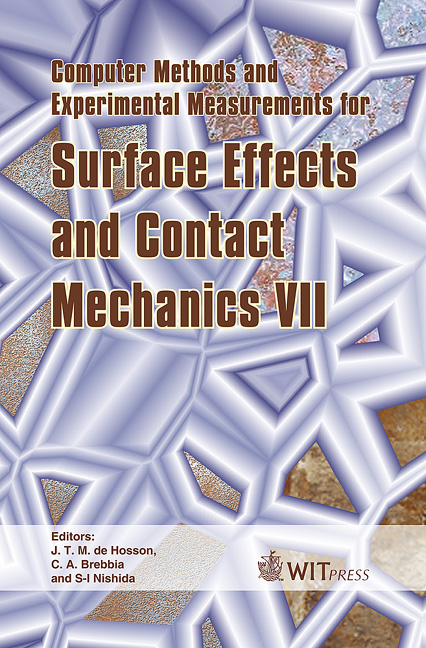Effect Of Surface Carbonitriding By Plasma Immersion Ion Implantation On The Fatigue Behaviour Of 316L Austenitic Stainless Steel
Price
Free (open access)
Transaction
Volume
49
Pages
10
Published
2005
Size
1,856 kb
Paper DOI
10.2495/SECM050021
Copyright
WIT Press
Author(s)
K. Obrtlík, Y. Jirásková, J. Man & J. Polák
Abstract
Cylindrical specimens of 316L austenitic stainless steel in an as-received condition and with surface carbonitriding by plasma immersion ion implantation were cyclically strained under plastic strain control. The micro-hardness depth profile of the hardened surface layer was measured. Mössbauer spectroscopy and X-ray diffraction were used to study the phase composition of the treated layer. The stress-strain response and fatigue life data of both materials were obtained. The surface relief and fracture surfaces were examined to study fatigue damage mechanisms. Two domains separated by the transitional plastic strain amplitude could be distinguished in the fatigue behaviour of the treated steel. In the low amplitude domain, the main crack originates in the subsurface region resulting in a prolonged lifetime. In the high amplitude domain, the main crack initiates at the surface and the fatigue life of the treated steel is reduced compared to the untreated one. Keywords: austenitic stainless steel, surface carbonitriding, fatigue life curves, stress-strain response, plasma immersion ion implantation, crack initiation. 1 Introduction Plasma immersion ion implantation is one of advanced methods of plasma engineering. This is a non-line-of-sight technique for the surface modification of industrial components, offering several inherent advantages over conventional beam-line ion implantation (Wei et al. [1]). One of the key advantages is the capability to treat efficiently irregular-shaped specimens without complex specimen or ion beam manipulation. The nitrogen and/or carbon ions to be
Keywords
austenitic stainless steel, surface carbonitriding, fatigue life curves, stress-strain response, plasma immersion ion implantation, crack initiation.





